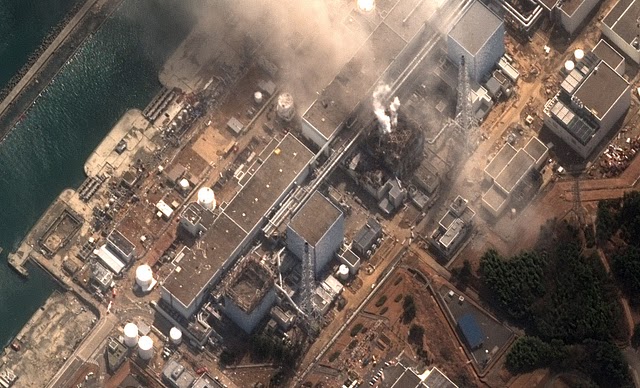A fresh leak of highly radioactive water into the open ocean has been discovered at Fukushima nuclear complex

Large quantities of highly radioactive water have leaked through a crack in the wall of a treatment facility at the Fukushima power plant, and some may have founds its way into the sea, the plant’s operator, Tokyo Electric Power (Tepco), said.
Crews were dispatched to find the cause of the runoff, which was discovered yesterday near a system used to treat contaminated water, according to the company.
The plant operator said it was using sand bags to prevent further leakage after 45 tonnes of water were found pooled around the water-treatment system’s condensation unit.
Most of the water remained inside the building, but about 300 litres was estimated to have escaped and run into a nearby gutter that leads to the ocean before crews could contain the leaks, a company spokesman said today.
The water was contaminated with the radioactive substances caesium and iodine but their levels were “roughly the same as or slightly higher” than ocean water near the plant, the spokesman of the company said.
Experts believe the water could contain high levels of strontium-90, a beta-emitting radioactive substance that, if ingested, can cause bone cancer.
Public broadcaster NHK reported that although caesium levels in the leaked water were low, it could contain up to 130,000 becquerels per cubic centimetre of strontium, which has a half-life of 29 years.
Workers temporarily halted the purification apparatus after spotting a puddle of water on Sunday. They later recorded 1.8 millisieverts
It may take two to three weeks before it can be determined how much, if any, strontium is contained in the water.
Large areas around the Fukushima plant have been left contaminated with radiation after a series of meltdowns in the world’s worst nuclear accident since Chernobyl.
The accident has not directly claimed any lives, but has left tens of thousands of people displaced and rendered whole towns uninhabitable, possibly for decades.

You don’t hear much about this disaster any more. I would be quiet surprised if they said there was no radiation in the sea. And what about the people. Its like they have been forgotten.
Cesium levels were NOT low. They were still quite high. And the strontium levels were one million times government safety standards.